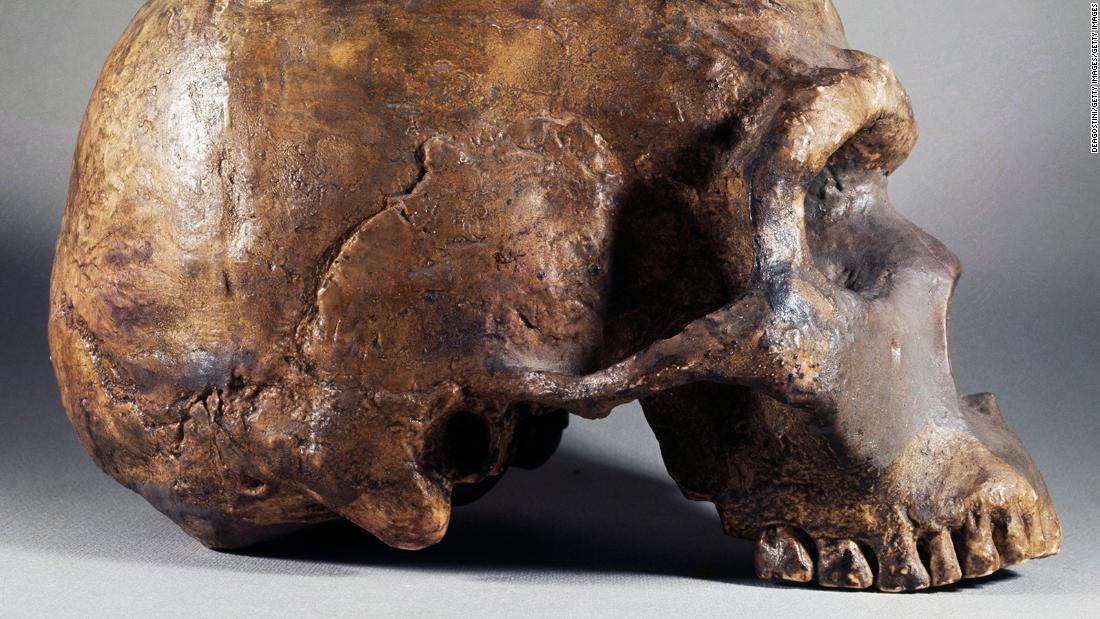
Whether Neanderthals and other human ancestors were capable of refined spoken language is a subject of long-running debate in human evolution.
New research published Monday suggests Neanderthals had a vocal communication system that could have been similar to human speech.
“Neanderthals could have produced all the sounds in that frequency range, as we can. There doesn’t seem to be any difference in their ability to produce speech sounds. So they certainly could have said ‘hello’ or ‘ok’ if those utterances had done so. any meaning to them, ”Rolf Quam, associate professor and director of the evolutionary study program at Binghampton University in New York, said in an email.
Studying the evolution of language is notoriously tricky, the researchers said, since the soft tissue that makes up brain and speech channels is not preserved in the fossil record. Fortunately, the bones that make up the hearing system have been preserved.
Using CT scans, the team created 3D models to reconstruct how Neanderthals heard by using information from the fossilized ear structures of several Homo sapiens, Neanderthals, and previous fossils of a group of hominins believed to be Neanderthals’ ancestors.
They used this information to reverse engineer how they may have communicated.
Consonants
Quam said the study was “the first comprehensive study of Neanderthal hearing ability,” and that more than 30 variables were considered, including the ear canal, eardrum, ear bones, and air-filled spaces in the ear.
They were able to measure how the energy in sound travels from the environment through the ear canal to the eardrum, through the small bones in the middle ear until it reaches the inner ear – a process called the transfer of sound power.
This information helped the team calculate the bandwidth used, that is the range of frequencies which reaches at least 90% of the sound energy.
This is the “frequency range in which we hear best,” explained Quam. “We still hear sounds outside of this range, but this range is a kind of ‘sweet spot’ where our ear is most tuned to sounds.”
They found that the bandwidth of Neanderthals was wider than that of the older hominins. It was very similar to living people and would have emitted most of the sounds in human language.
The research, published in the journal Nature Ecology & Evolution, suggested that Neanderthal speech might have caused increased use of consonants – a vocal signal that separates human speech and language from the communication patterns in other primates, which can make vowels. .
Complex lives
Many researchers now assume that Neanderthals had complex lives and would have developed the ability to speak, said Chris Stringer, research leader in human origins and professor at the Natural History Museum in London.
“Whether or not they had languages as complex as ours is not something that can be deduced from this research, as language is a product of the brain, not of the voice and hearing systems,” said Stringer, who is not in the study. was involved.
Alexander Stoessel, an evolutionary biologist at Friedrich Schiller University Jena in Germany who studies acoustic communication, said he largely agreed with the study’s conclusions. But Stoessel, who was not involved in the investigation, noted that their models had made assumptions about the “soft tissue parameters” in the ear – something that can strongly influence sound transmission.
“It’s difficult to communicate with people from my neighboring countries. I doubt they spoke the same language, but I think they could communicate somehow,” said Stoessel.
“They had sex with each other, so there was probably some kind of communication.”
